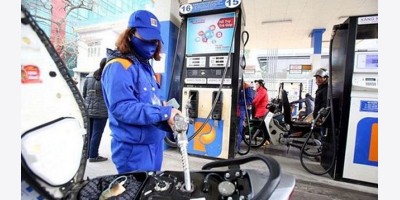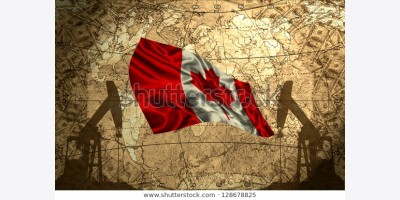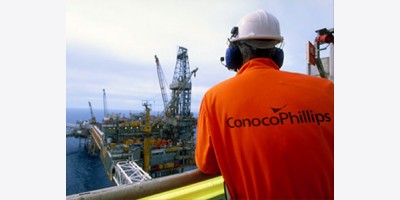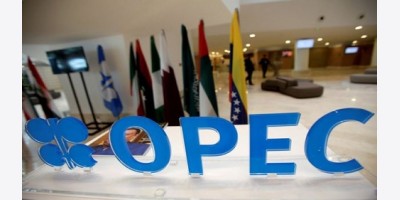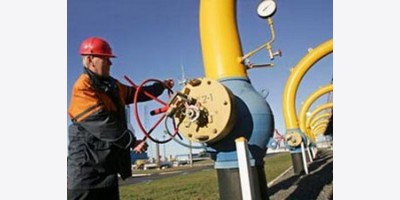By Thanh Nien News
A crewman from the Vietnamese coastguard ship 8003 looks out at sea as Chinese coastguard vessels give chase to Vietnamese ships that came close to the Haiyang Shiyou 981 oil rig in the East Sea, July 15, 2014. Photo credit: Reuters
Hanoi has kept the threat of an international lawsuit and stronger relations with Japan and the US on the table even after Beijing removed its giant oil rig from Vietnamese waters last month.
On July 26, roughly ten days after the rig was withdrawn, an international conference convened in Ho Chi Minh City, bringing together foreign and Vietnamese legal experts to debate the practicality of an international lawsuit against China.
The title of the event could not have been more specific: “Legal issues regarding China’s placement of the Haiyang Shiyou 981 oil rig in Vietnam’s Exclusive Economic Zone and Continental Shelf.”
Despite the departure, conference organizer Mai Hong Quy, rector of the HCMC University of Law, was not shy about what would happen next.
“The recommendations of this conference will be forwarded to Vietnamese and international agencies at the soonest possible,” she said.
The drill
On July 15, the state-owned China National Petroleum Corporation announced that the US$1-billion oil rig had finished drilling near the Paracel (Hoang Sa) Islands, which it seized by force in 1974. The rig was drawn back to Hainan Island, China's southernmost province, after having successfully discovered “signs of oil and gas,” the Chinese company said in a statement.
The rig sent Sino-Vietnamese ties plummeting toward their lowest point in decades after its arrival in Vietnam’s 200-nautical-mile exclusive economic zone in the East Sea, the Vietnamese term for the South China Sea, on May 2.
In the ensuing days, China amassed an aggressive fleet around the rig to chase off Vietnamese police boats.
The move, which many called an “invasion,” triggered peaceful protests that erupted into violence in central and southern Vietnam two weeks later. The resulting riots left hundreds of foreign-owned factories vandalized and three Chinese nationals dead.
At the height of the tension, Vietnamese Prime Minister Nguyen Tan Dung made repeated public statements about plans to take legal action against China to resolve the dispute. In March, the Philippines submitted a case to an arbitration tribunal at The Hague, challenging China's claims in the East Sea.
Although the crisis appears over for the moment and PM Dung has demanded that China not repeat its actions, most expect the oil rig to return, either later this year or next year, prompting another standoff.
Given that, “it appears unlikely that [Vietnam] shelved a decision to take legal action against China,” said Carl Thayer, a maritime analyst at University of New South Wales in Australia.
What else is in the cards?
Analysts believe Vietnam should not count on a case arbitrated by the UN tribunal as its only defensive option.
Since 2007, China has excluded itself from the dispute settlement mechanism outlined by the United Nations Convention on the Law of the Sea (UNCLOS) to which Vietnam and China are signatories.
Beijing, which wields veto power at the UN’s Security Council, has outlined its strategic philosophy in maps that take in about 90 percent of the 3.5 million square kilometer East Sea.
A slew of squabbles between China and ASEAN claimants in the East Sea have virtually stalled negotiations on a formal code of conduct that has been in the works for years.
Analysts say the prospect of a code of conduct -- particularly a robust, binding one -- is rather dim. Beijing will likely seek to maximize the extent to which it can control before it finally ratifies the terms of the code, they say.
In recent months, China dispatched three more oil rigs across the East Sea, while cranking up a number of land reclamation projects on small islands in the Spratly Islands.
Ahead of the ASEAN Regional Forum meeting held this weekend in Myanmar, a Chinese official has said the country will build whatever it wants on the isles it controls the East Sea.
The announcement was made after the Philippines said it would, like the US, propose a freeze on all activity that raises tensions in disputed waters at the regional meeting, where Southeast Asian foreign ministers will hold security talks with their counterparts, including representatives from the US and China.
In an explicit gesture to snub those calls, China plans to build lighthouses on five islands in the East Sea, Reuters quoted Chinese media reports as saying Thursday.
It is in that context that “what seems to really matter to China is international pressure. China is not going to suck up [to anyone],” Baladas Ghoshal, an expert at the India-based the Institute of Peace and Conflict Studies, told Thanh Nien News on the sidelines of the conference in HCMC last month.
“So that’s why I say other methods could be the best way to get China to behave. You have to exhaust all methods and just cannot depend on one,” he said.
Friend or foe?
Meanwhile, Vietnam has apparently welcomed efforts to ramp up economic and strategic engagement from the US and its treaty ally Japan, which is itself embroiled in a dispute with China over a series of uninhabited islands in the East China Sea.
In the latest sign of such reinforcement, Japanese Foreign Minister Fumio Kishida said during a visit to Hanoi last week that Japan would give six used naval boats to Vietnam to boost its patrols and surveillance capacity in the East Sea. The donation, worth an estimated 500 million Yen (US$4.86 million), will be accompanied by training and equipment to help the coastguard and fisheries surveillance in their efforts.
Japan's Foreign Minister Fumio Kishida attends a media briefing with his Vietnamese counterpart Pham Binh Minh after their meeting at the Government Guesthouse in Hanoi August 1, 2014. Photo credit: Reuters
Japan's foreign ministry also announced plans to reopen funding to new Official Development Aid (ODA) projects in Vietnam after a short-lived halt during a June investigation into bribery allegations at the state-run Vietnam Railways.
Vietnamese President Truong Tan Sang called on the US to lift a ban on the sale and transfer of weapons to the country during his meeting with former US President Bill Clinton in Hanoi last Friday. Several US senators and the US ambassador nominee to Vietnam have thrown strong support behind this plan.
Before China withdrew the oil rig, the US Senate issued a resolution which, among other things, condemned China's "unilateral actions" to change the status quo in disputed waters. The US has been a vocal critic of China’s behavior at sea and reiterated its strategic “pivot” towards the Asia-Pacific, something China considers a clear threat.
Analysts say while the oil rig crisis has prompted Vietnamese leaders to realize that the country needs to become less economically dependent on China, “this does not imply a zero sum game”, Dennis McCornac, a professor at Loyola University in Baltimore (Maryland), told Thanh Nien News.
Analysts say Vietnam certainly needs to engage more with Japan in the areas of technology and education, while maintaining cautious support for the militarization strategies of Prime Minister Abe.
“Abe is quite the nationalist and is prone to say and do things that irritate not only China, but South Korea as well,” McCornac said. “Given Japan's history, it is not trusted by many countries in Asia. Aligning too closely with Japan could hurt Vietnam's relations with other countries.”
Reuters reported Thursday that over-dependence on trade with China will be hotly debated at the highest levels of the Vietnamese Communist Party.
Trade with China hit $50 billion last year and any interruption could badly hurt Vietnam, while inflicting little damage on China, the newswire said. Thirty percent of Vietnam's imports in 2013 were came from its neighbor, it said. Reuters estimated the import's value at $37 billion-- or just one percent of Beijing's total exports.
The report suggested that the US-led Trans-Pacific Partnership (TPP) deal that has been under negotiation since 2009 could prove a “game-changer”. China is not among the dozen countries involved in talks to form a trade pact that would cover a third of global trade.
But skeptics have warned Vietnam to tread carefully on the TPP, which they describe as highly skewed in favor of the larger economies. Vietnam may not benefit to any great extent, they say.
“It would be foolish to think that Vietnam can ignore its close economic relations with China and rely on other countries instead,” said Bill Hayton, author of the forthcoming book “South China Sea: the struggle for power in Asia”. “It does so much trade with its big neighbor that it must seek to preserve good economic relations while also defending its maritime claims,” he said.
Most analysts agree that the world is not a very nice place and Vietnam must fend for itself.
“Vietnam needs to defend itself, but it cannot do that militarily. It needs to do so diplomatically,” McCornac said.
“While most do not trust China, I don’t trust the US or Japan to look after Vietnam’s interest.”





